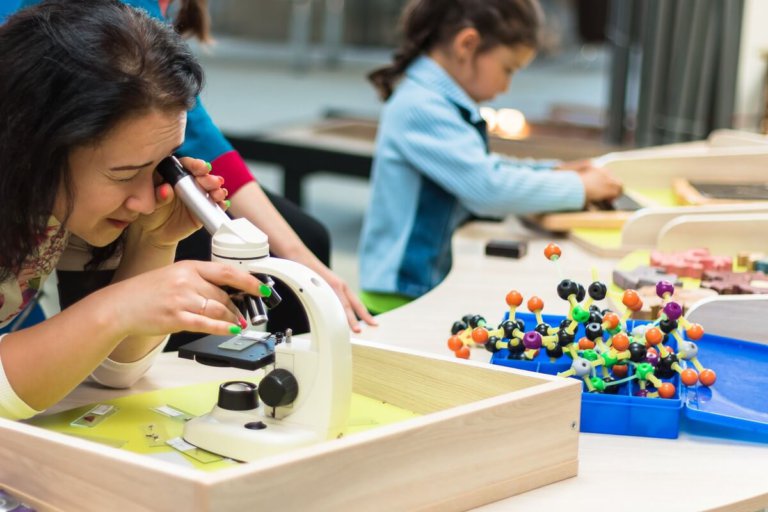
STEM (Science, Technology, Engineering and Mathematics) fields will continue to play a crucial role in the future of work and for countries looking to stay competitive in the global economy.
But a shortage of talent threatens to stunt its growth.
A report by Deloitte and the Manufacturing Institute found that five key skills are expected to be needed to succeed in the Fourth Industrial Revolution include technology and computer skills, programming skills for robots and automation, critical thinking, working with tools and techniques, and digital skills.
Many of these are skills obtained by studying STEM disciplines.
Skills shortage in STEM?
The US and China are two superpowers in the tech race jostling to become a global hegemon, but a shortage of talent in the field threatens to impede the US’s goals of powering ahead of the competition.
Reports note that the US is facing a critical shortage of highly skilled STEM professionals. Despite more graduates choosing to study STEM in the US, an estimated 2.4 million jobs went unfilled in 2018, according to data compiled by Early Childhood Education (ECE) Degrees.
They note that there can be “dire economic consequences of a poorly prepared workforce,” suggesting that more Americans should pursue their studies and careers in the field.
Hence, it becomes essential for schools to make math and science more fun and interesting for students to perform better in those fields and later to pursue STEM-related fields in their tertiary studies.
STEM in the K12 US curriculum
The updated version of Marty the Robot will soon be available for schools, making STEM learning more fun and engaging for students. @Robotical #MartytheRobot #EdTech https://t.co/Agk47xj2Tb
— Study International (@Study_INTNL) December 26, 2019
There has been an increasing focus on STEM in the K-12 curriculum, and data suggests some positive strides in the field.
From 1995 to 2015, US students improved their math skills significantly, according to the Trends in International Mathematics and Science Study (TIMSS). TIMSS provides reliable and timely data on the mathematics and science achievement of US students compared to that of students in other countries.
For instance, fourth-graders’ average scores increased from 518 to 539 and eighth-graders from 492 to 518. Both high- and low-performing students showed improvement.
However, science scores weren’t as promising. Fourth-graders’ average scores increased from 542 to 546; low-performing students improved, but high-performing students declined. Meanwhile, eighth-graders’ average scores increased from 513 to 546, with improvement only seen amongst the lowest-performing students.
From 2015 to 2018, US students improved their international standing, according to PISA.
In 2015, tenth-grade students ranked 35th in math and 17th in science; in 2018, tenth-grade students ranked 30th in math and 11th in science. Despite that, actual scores have remained stagnant for over a decade, said ECE.
More work needs to be done.
The US prides itself on its innovative culture but statistics from the US Patent and Trademark Office notes that a lot of this innovation is not homegrown and comes from foreign citizens. For instance, in 2018, 53.1 percent of the 307,759 patents filed in the US were of foreign origin – higher than 2017 (52.7) and 2016 (52.6) respectively.
As more than half of US patents go to foreign nationals and foreign companies, it becomes increasingly crucial for the US to build their STEM workforce to stay competitive in the global economy.
Liked this? Then you’ll love…
Does the PISA exam define education quality?
PISA test results 2019: What Australia can learn from Estonia








